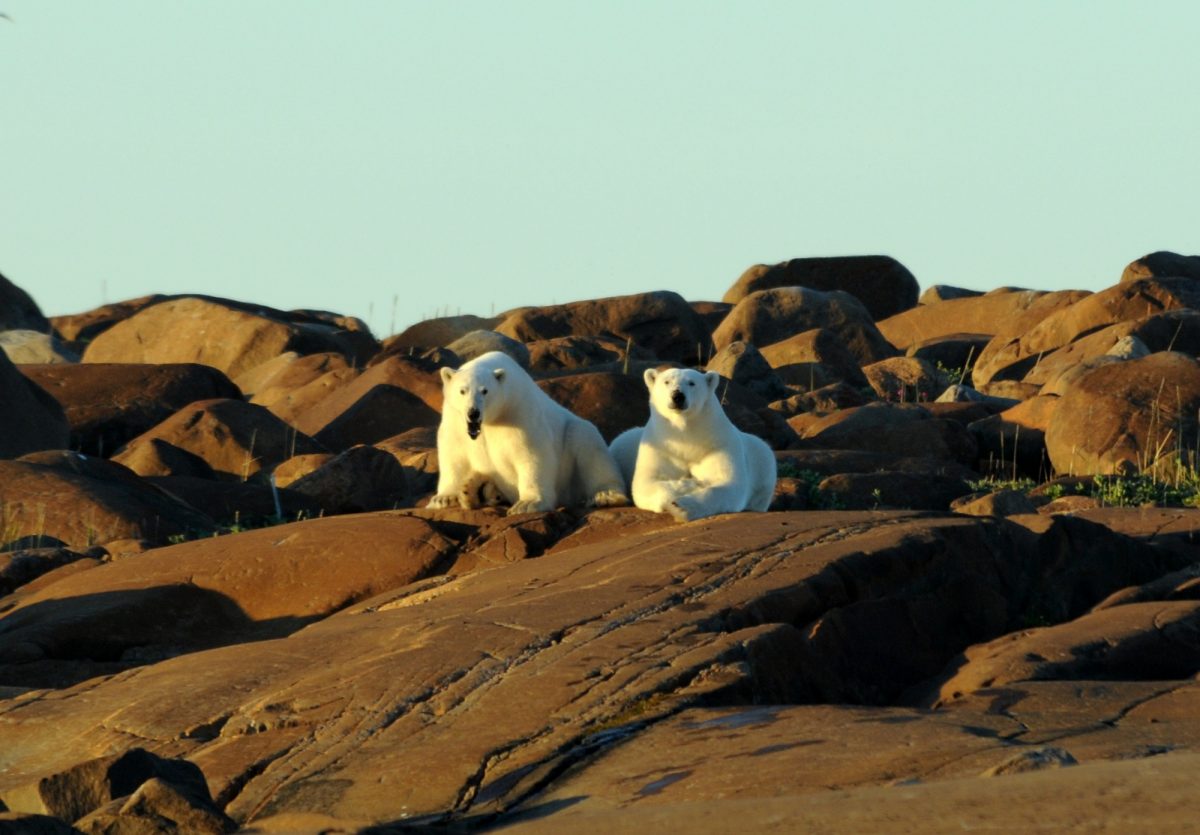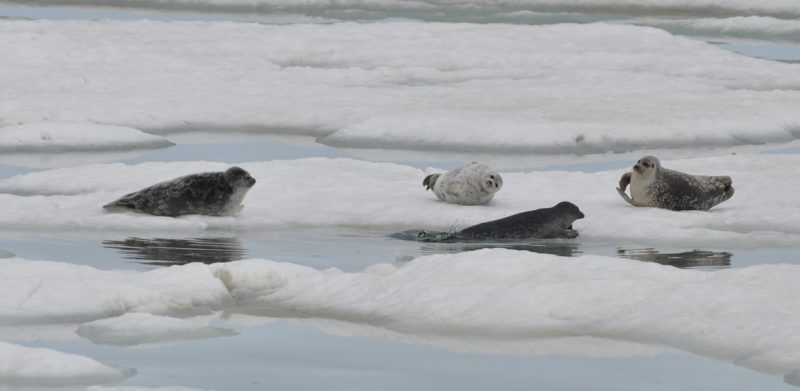
Photo by David Yurkowski
Climate change threatens iconic relationship
National Polar Bear Day a somber affair this year
The iconic relationship between polar bears and ringed seals is changing in western Hudson Bay, and even though the bears are eating fewer ringed seals, the seals should refrain from celebrating.
In a new paper published in the journal Environmental Science and Technology, a UM team lead by David Yurkowski, a researcher in biological sciences, report that sea ice reduction in the region is changing the structure and function of the upper part of the food web. The paper is the first to measure carbon and nitrogen isotopes and mercury together in polar bears and ringed seals to better understand how the animals are using habitat, and what they are eating.
“The whole result was a surprise,” Yurkowski says on National Polar Bear Day. “You’d assume you’d see that strong polar bear-ringed seals relationship continue over time but we didn’t see that. We saw contrasting patterns.”
The researchers saw, for instance, a decline in total mercury concentrations in ringed seals, but saw no change in polar bears’ concentrations, suggesting the two species are beginning to eat different things. For the seals, this means that as the sea ice melts, they are adjusting their diet to include more of a phytoplankton-derived diet, which blooms in the open water.
“Ringed seals are eating for longer periods in the open water and you could argue this is better for them,” Yurkowski says, quickly noting a caveat: ringed seals require ice to rear pups and less ice can result in fewer being born; and ice melting too quickly can impact survival rates of new pups not ready to be weaned. So, on one hand, ringed seals are being eaten less by polar bears, but on the other, the habitat their pups require is disappearing.
“The seals are responding to the changes in the environment but at this point it’s hard to say if it’s going to work out in their favour,” Yurkowski says.
The findings also suggest that polar bears may be eating other seals, such as bearded and harbor seals. What this means for this dynamic is already the focus of another UM study underway.
The key thing with the bears is they use sea ice as a hunting platform to get to these species. And this ice is degrading, becoming more mobile, and breaking up earlier in the season, limiting the bears’ opportunity to hunt seals and fatten up before heading into the lean times of summer.
“The relationship between polar bears and ringed seals is weakening, and that’s likely going to continue,” Yurkoswki says. “The food web is changing, we’ve seen this change, and the food web structure and function in the Arctic is likely going to be different than it was not long ago.”
Research at the University of Manitoba is partially supported by funding from the Government of Canada Research Support Fund.







